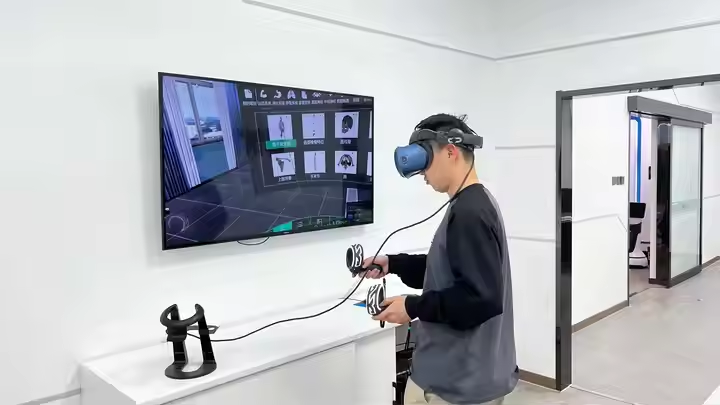The landscape of medical education is evolving, and human anatomy VR for institutions is at the forefront of this transformation. DIGIHUMAN offers a cutting-edge VR system that revolutionizes the way students learn human anatomy. By providing an immersive, 3D reconstruction of the human body, it creates a more engaging and realistic learning environment than traditional textbooks and cadaver dissections. This technology is shaping the future of anatomy education in medical institutions.
Immersive VR Anatomy for Interactive Learning
The DIGIHUMAN system brings anatomy education to life by integrating virtual reality with highly detailed anatomical models. Through a high-resolution VR headset, students are immersed in a 360-degree environment where they can study human anatomy with unmatched clarity.
Equipped with precise hand controllers, users can interact directly with virtual structures—rotating, dissecting, and exploring them from any angle. These interactive features allow learners to develop a hands-on understanding of organs, bones, muscles, and body systems without the need for physical specimens.
Applications and Benefits for Medical Institutions
For medical institutions, human anatomy VR for institutions offers numerous advantages. It overcomes the limitations of physical specimens, such as cadavers, providing an accessible, sustainable, and cost-effective alternative. DIGIHUMAN’s VR system is flexible, making it ideal for both traditional classrooms and virtual learning environments. Most importantly, it enhances knowledge retention and student engagement, leading to better comprehension of complex anatomical concepts. This innovative learning tool ensures that students gain a deeper, more interactive understanding of human anatomy.
Conclusion
Incorporating DIGIHUMAN‘s VR system into medical curricula is undoubtedly the future of anatomy education.


